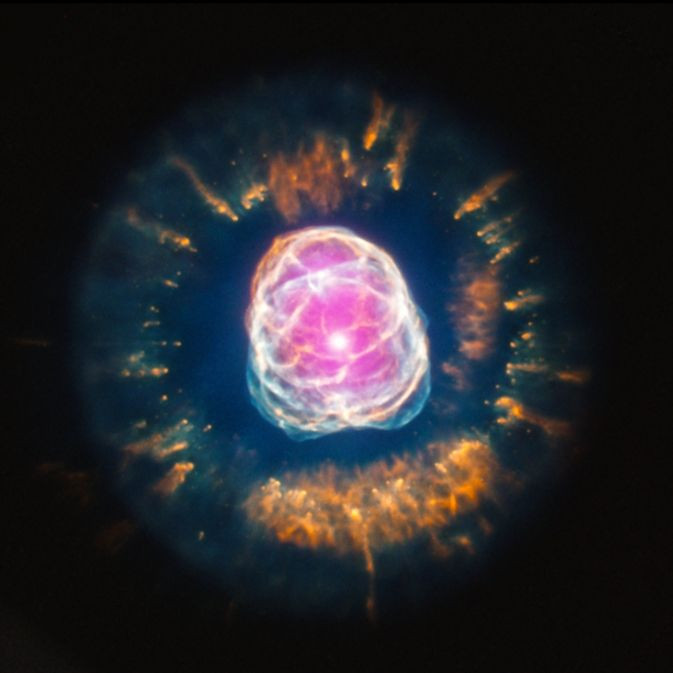Death Of A Star Captured In Brilliant Image By NASA [PHOTO]

The lifespan of a star can encompass billions of years, so it is unsurprising that the death of one of them can make for a radiant display of light. Scientists were recently able to get a good look at one dying star, planetary nebula NGC 2392, capturing it in a pretty radiant composite image. The star is located 4,200 light-years away from Earth and has entered its final stages of life.
NASA released the composite photograph of the star Thursday, detailing the significance of the image’s brilliant colors. “This composite image of NGC 2392 contains X-ray data from NASA’s Chandra X-ray Observatory in purple showing the location of million-degree gas near the center of the planetary nebula. Data from the Hubble Space Telescope show -- colored red, green and blue -- the intricate pattern of the outer layers of the star that have been ejected,” the U.S. space agency explained.
Speaking of the end of days for NGC 2392, NASA said: “[P]lanetary nebulas form when a star uses up all of the hydrogen in its core -- an event our Sun will go through in about five billion years. When this happens, the star begins to cool and expand, increasing its radius by tens to hundreds of times its original size. Eventually, the outer layers of the star are carried away by a thick 50,000 kilometer per hour wind, leaving behind a hot core. This hot core has a surface temperature of about 50,000 degrees Celsius, and is ejecting its outer layers in a much faster wind traveling six million kilometers per hour. The radiation from the hot star and the interaction of its fast wind with the slower wind creates the complex and filamentary shell of a planetary nebula. Eventually the remnant star will collapse to form a white dwarf star.”
And, along the way, it will burn colorful images like this one thousands of light-years across the cosmos.
© Copyright IBTimes 2024. All rights reserved.






















